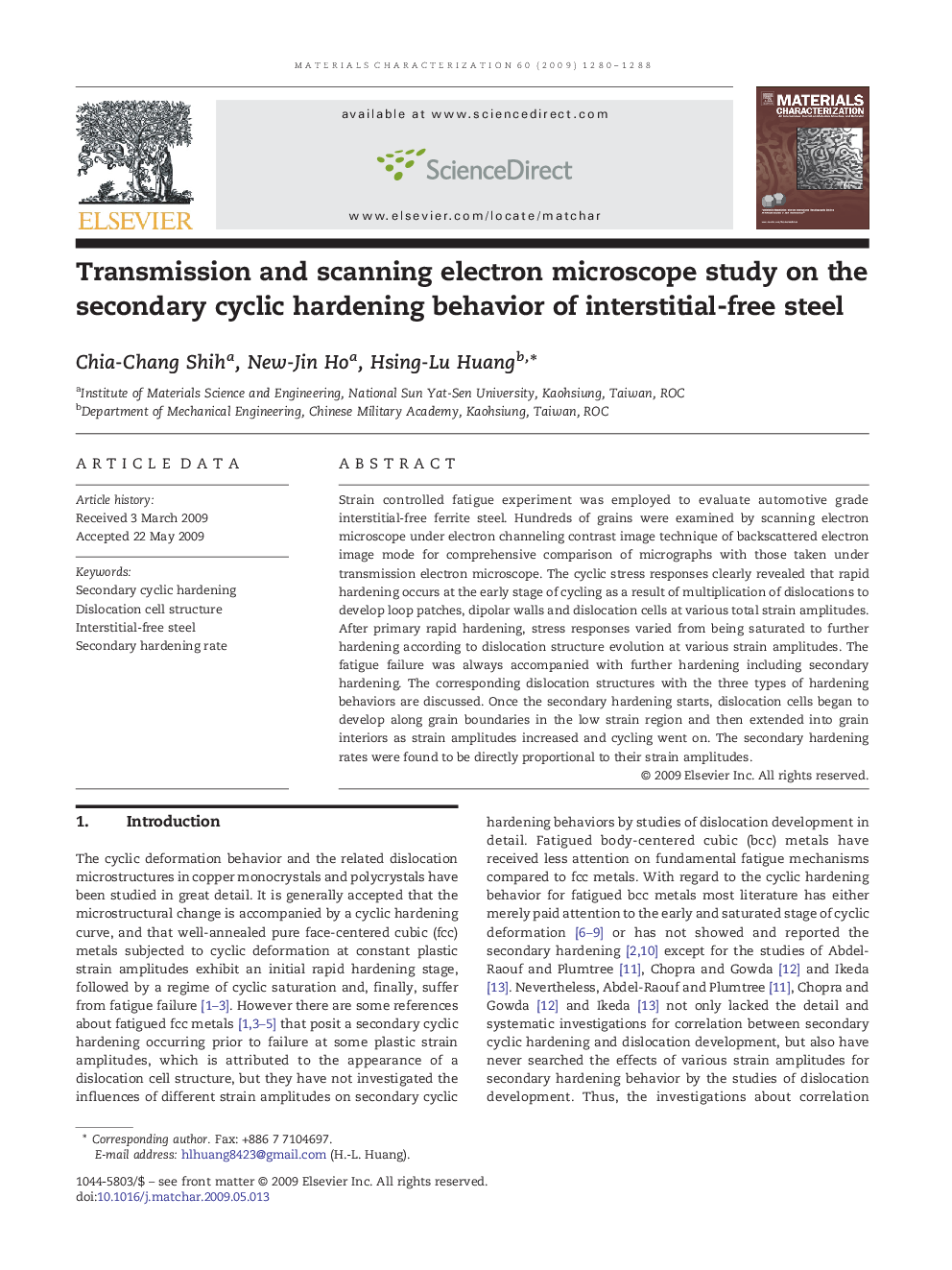| Article ID | Journal | Published Year | Pages | File Type |
|---|---|---|---|---|
| 1571827 | Materials Characterization | 2009 | 9 Pages |
Abstract
Strain controlled fatigue experiment was employed to evaluate automotive grade interstitial-free ferrite steel. Hundreds of grains were examined by scanning electron microscope under electron channeling contrast image technique of backscattered electron image mode for comprehensive comparison of micrographs with those taken under transmission electron microscope. The cyclic stress responses clearly revealed that rapid hardening occurs at the early stage of cycling as a result of multiplication of dislocations to develop loop patches, dipolar walls and dislocation cells at various total strain amplitudes. After primary rapid hardening, stress responses varied from being saturated to further hardening according to dislocation structure evolution at various strain amplitudes. The fatigue failure was always accompanied with further hardening including secondary hardening. The corresponding dislocation structures with the three types of hardening behaviors are discussed. Once the secondary hardening starts, dislocation cells began to develop along grain boundaries in the low strain region and then extended into grain interiors as strain amplitudes increased and cycling went on. The secondary hardening rates were found to be directly proportional to their strain amplitudes.
Related Topics
Physical Sciences and Engineering
Materials Science
Materials Science (General)
Authors
Chia-Chang Shih, New-Jin Ho, Hsing-Lu Huang,
